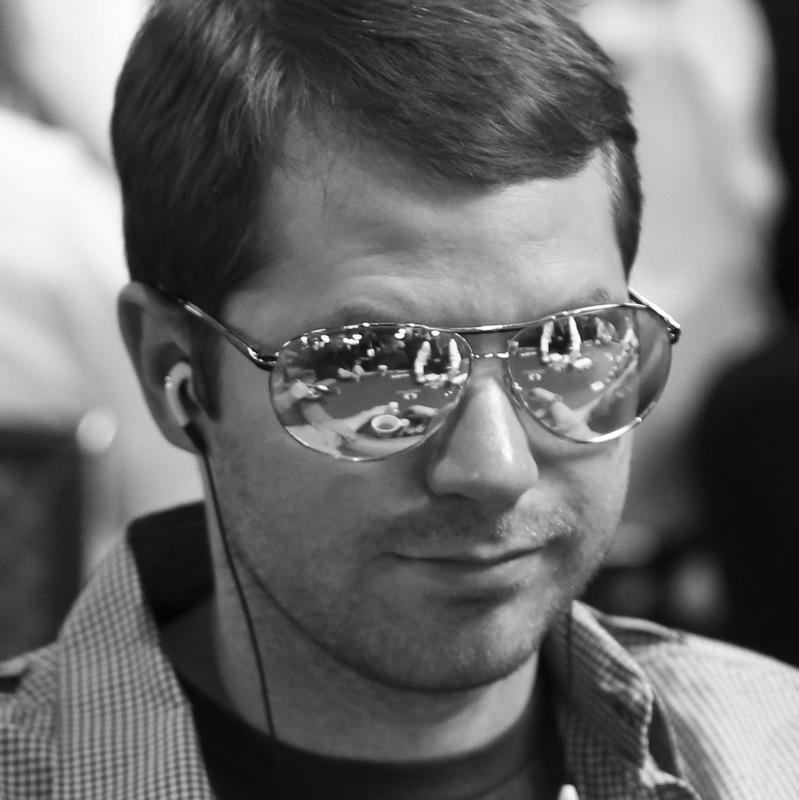






Which Hands To Reraiseby Jonathan Little | Published: Sep 28, 2016 |
|
|
One of the most common questions I am asked is, “Which hands should I reraise with before the flop?” (A reraise is also called a three-bet.) The answer is not cut and dry. As with most things in poker, your strategy should depend entirely on your opponents’ strategies. If you blindly three-bet the same range in all situations, you will lose a huge amount of money in the long run.
Three-betting ranges are referred to as either “linear” or “polar.” A linear three-betting range consists of only the best hands. This is an example of a typical linear three-betting range:
It is ideal to three-bet with a linear range versus players who will call your three-bet with many hands that you dominate, and only four-bet with premium hands that crush even your strong linear range. The vast majority of weak, straightforward small-stakes players fall into this category.
For example, if a somewhat splashy, small-stakes player raises from middle position to three big blinds out of his 100-big blind stack and you are in the cutoff or on the button, you should often three-bet with the above linear range. Your opponent will usually call with many hands you dominate, such as 4-4, A-4 suited, and K-10, and only four-bet with A-A, K-K, Q-Q, and A-K. Your strategy against these players is incredibly simple and intuitive. When they call your three-bet, you extract a huge amount of value and when they four-bet, you get off the hook. If you want a detailed discussion on the strategies I use against small-stakes players, I wrote two books on the topic: Strategies for Beating Small Stakes Poker Tournaments and Strategies for Beating Small Stakes Poker Cash Games. You can get them at JonathanLittlePoker.com/books.
A polarized three-betting range consists of the absolute best hands and a few hands that are not quite good enough to call a preflop raise with. This is an example of a typical polarized three-betting range:
It is ideal to three-bet with a polarized range versus players who will either four-bet or fold most of the time. Many good, aggressive players fall into this category. It is important to realize that your hand’s post-flop playability isn’t too important when you will rarely see a flop.
Notice that both the linear range and the polarized range examples contain about nine percent of hands. While 9 percent is not a magic number, it is important to understand that players can three-bet the same percentage of the time, but with drastically different ranges. Do not assume that all three-bettors are three-betting with the same set of hands.
In fact, the example of a polarized range could consist of a different set of bluffing hands. Here is another reasonable polarized three-betting range:
You should be more inclined to three-bet with hands containing a “blocker” (an ace or king), versus players who will almost certainly four-bet or fold. The presence of an ace or king in your bluffing hands makes it less likely that your opponent has a premium hand because there is one fewer ace or king in the deck. Against players who may be inclined to call your three-bet, you should three-bet a range that contains various suited connected hands because you will play postflop more often.
It is important to understand that when you three-bet with a polarized range, you are calling with many hands that flop well, such as 6-6, A-J, Q-10 suited, and 7-6 suited. Calling with these hands allows you to realize their post-flop equity as opposed to three-betting them and then being forced to fold to a four-bet.
So, the next time you find yourself facing a preflop raise, ask yourself what you expect your opponent to do if you three-bet. If you pay attention, you will find many opportunities to get out of line with marginal holdings, allowing you to steal pots that you would otherwise concede. Even if you steal only one preflop raise per hour, that will add a huge amount to your win rate in the long run. ♠

Jonathan Little
Features
The Inside Straight
Strategies & Analysis